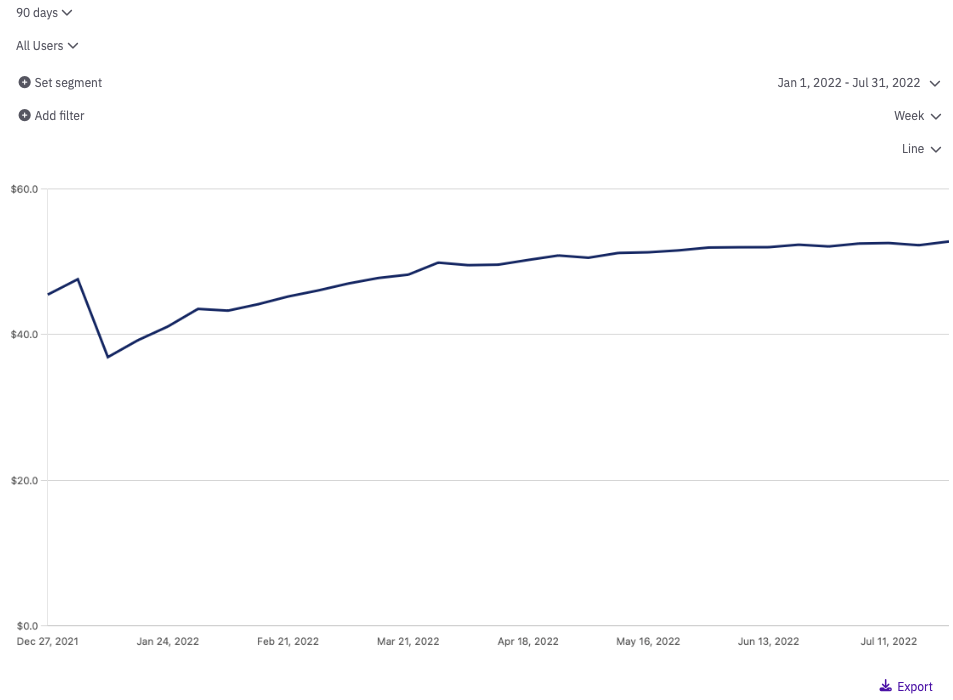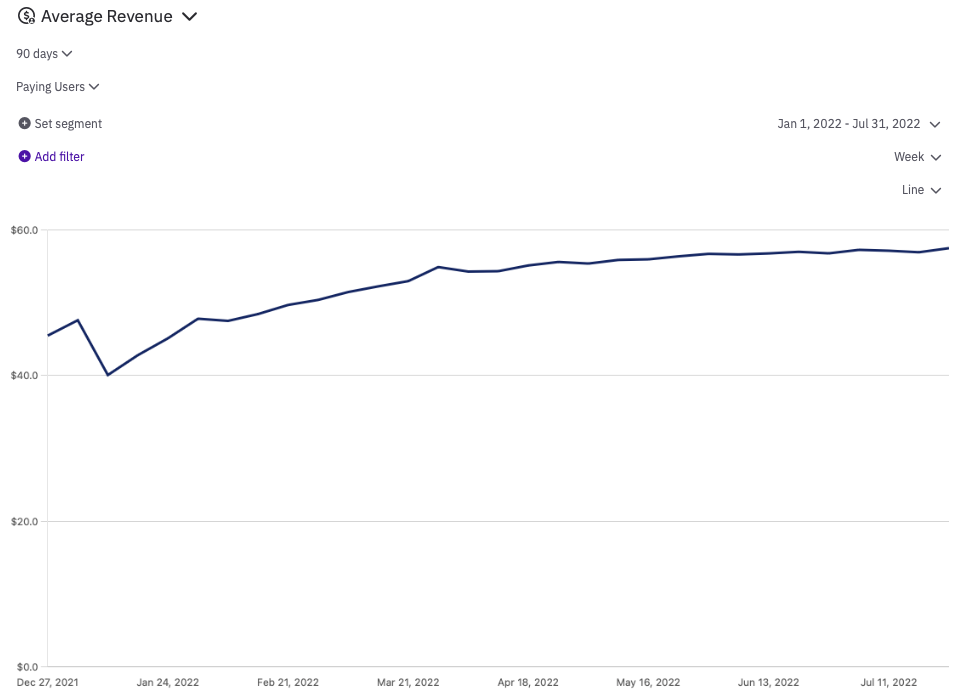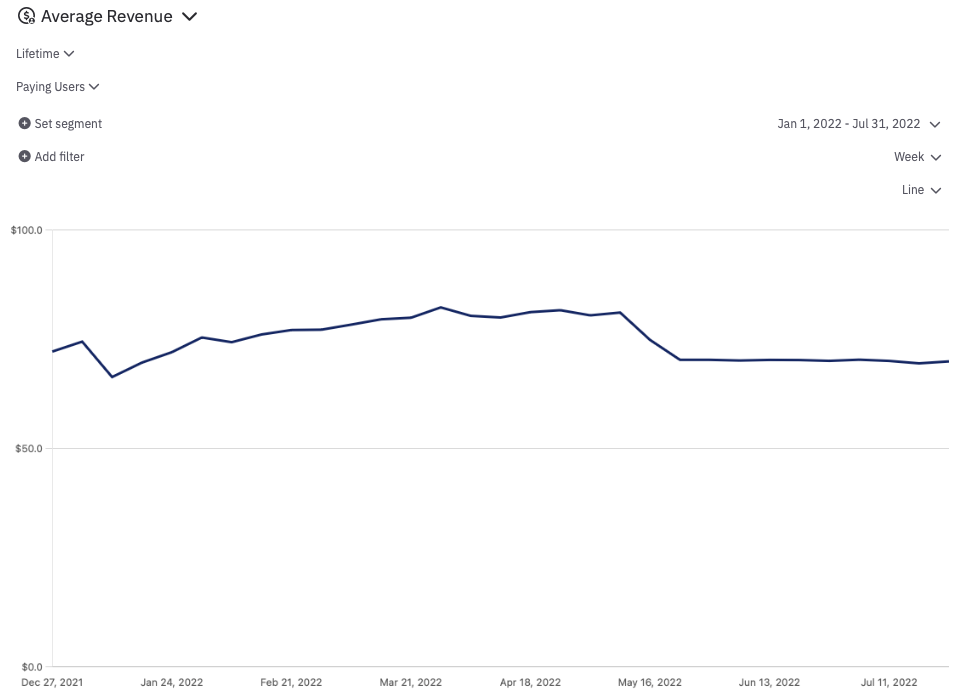Average Revenue
Average Revenue is an important metric that businesses use to measure the revenue generated by their user base. In this article, we'll explain what it means, how it's calculated, and how it can be used to optimize revenue performance.
Average Revenue Per User (ARPU)
ARPU is typically calculated over a specific period of time, such as 30 days, 90 days, 6 months, 1 year, and so on. For instance, ARPU 90 days allows you to understand how much revenue is generated by the average user during the first 90-day period after they subscribed. It is calculated as a time series, with the total revenue and the number of users being calculated separately for each individual time period (e.g., week, month, year).
In general, the formula for ARPU N Days is:
ARPU N Days = (Total Revenue generated within N days by all users subscribed during time T) / (Number of Users subscribed during time T)
This calculation enables businesses to track changes in ARPU over time and identify trends or patterns that may influence revenue performance.

Average Revenue Per Paying User (ARPPU)
In addition to the usual parameters available for all metrics, such as segments and filters, the Average Revenue calculation includes an extra parameter: whether to consider all users subscribed in each time interval T or only paying users.
When focusing on paying users, the formula becomes:
ARPPU N Days = (Total Revenue generated within N days by all users subscribed during time t) / (Number of Paying Users subscribed during time t)
This calculation provides insights into the behavior of paying customers, allowing businesses to better understand their revenue contributions. As expected, the average revenue per paying user tends to be higher.

Realised Lifetime Value (LTV)
While ARPU and ARPPU are calculated over specific time periods, the realized Lifetime Value (LTV) reflects the total revenue generated by the average user throughout their entire active period.
It's important to note that when analysing recent time windows, where users subscribed might not have realised their full lifetime value yet, the metric may not accurately represent the correct lifetime value.
To ensure reliable results, it's essential to consider the average subscriber's lifetime and exclude the most recent time window by an interval as large as the typical subscriber's lifetime.

Applications
ARPU is a useful metric for businesses to understand the average revenue generated by each user. ARPPU allows them to gain insights into the revenue generated by their most valuable customers. By analyzing ARPU and ARPPU, companies can identify customer groups that generate the most revenue.
For example, these metrics can help understand which pricing strategies are most effective in driving revenue growth. By identifying the customer segments that contribute the most revenue, businesses can develop targeted marketing strategies to acquire more of these valuable customers and optimize their revenue performance over time.
Updated over 1 year ago
